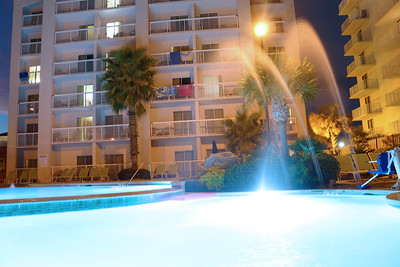Everyone thinks they know Murphy’s Law. If you ask someone to cite it, chances are good that they’ll say, “Anything that can go wrong will go wrong.”
Except that Murphy’s Law is a little more nuanced than that.
Nothing is as easy as it looks.
Everything takes longer than you think.
Anything that can go wrong will go wrong.
If things seem to be going well, you have obviously overlooked something.
If several things could go wrong, the one that will cause the most damage will happen.
Everything that can go wrong will go wrong all at once.
Things get worse under pressure.
There are many more permutations. Ultimately, it boils down to this: no matter how well you think you’ve planned something, in retrospect, you didn’t plan it as well as you needed to.
Murphy’s Law: Nothing is as easy as it looks
Ask Alamo Colleges about their mixed use development plan.
Alamo Colleges is a five-institution community college district in Bexar County, TX that serves the greater San Antonio metropolitan area. In 2011, the trustees of the Alamo Colleges voted to enter their first public-private partnership to build and operate student housing for students at the Alamo Colleges.
Alamo Colleges owned a 4.4-acre parcel on North Main Street in downtown San Antonio, where it would locate the project. Its trustees selected the NRP Group to design and build a mixed-use development that included student housing, retail space and parking in a growing area of San Antonio known as Tobin Hill. A press release from 2011 describes NRP as “ranked number one in the Top 50 Affordable Housing Developers for 2007, 2008, and 2009 by Affordable Housing Finance.”
150 apartments were supposed to be affordable for San Antonio College’s 22,000 students. 10,000 square feet of retail space would add to the excitement of Tobin Hill. Student parking permits would pay for a 1,000-space parking structure. The parking structure would generate more revenue through after-hours parking for non-student visitors to Tobin Hill.
The NRP Group and its financier, Balfour Beatty Capital, would finance the project. Alamo Colleges would create a public facility corporation, which in turn, would create an LLC to actually hold the deed on the site.
According to the agreement, the developer and the Alamo Colleges LLC would split the profits 50/50. The developer would also get a 4% development fee. Trustees planned to use profits from the first phase of the project to finance the construction of a 100,000-square foot academic building. And a 500-ton central plant. If you can’t envision 100,000 square feet, it would be about the size of the TI Building.
When things go well….
Things seemed to be going well. The project was projected to return $3.8M to the Alamo Colleges over 12 years.
“We’re so excited to bring this unique mixed-use development to downtown San Antonio. We hope that the students and community will greatly benefit from this investment and we look forward to seeing this area of downtown San Antonio continue to blossom as a result.”
John Strybos, Associate Vice Chancellor of Facilities for the Alamo Colleges.
No one seemed concern when NRP VP Debra Guerrero said, “These aren’t huge profit generators.”
The approved design of the student housing project, which looked a lot like a Holiday Inn Express, included a combination of 225 1-, 2- and 4-bedroom units. It also included 27,000 feet of commercial space. The development had a total price tag of $30M, $15M of which was needed to build the parking structure.
The financier, which was supposed to underwrite the full cost of the project, couldn’t finance the parking structure. So, Alamo Colleges drained an endowment to finance it. But that was OK because the parking fees would rebuild the endowment.
How $3.8M in profits over 12 years were supposed to rebuild a $15M hit to an endowment remains… murky.
Everything that can go wrong…
Fast forward to 2021. The student apartments didn’t turn out to be as big of a hit as the Trustees thought. The complex is only about 70% occupied. A spokesperson for the Alamo Colleges characterized the problem as “a lack of demand” for student housing. The configuration of the apartments was also problematic, and made them hard to rent. Which is weird, because NRP hired Campus Advantage – a student housing management company – to help design the apartment configurations. And COVID-19 made things worse, of course.
NRP recently told the Alamo Colleges trustees that the “cash flow deficits of the property are no longer sustainable.” NRP recommended selling the building to a third party that would redevelop the facility as affordable housing.
On Main Street.
Except that this isn’t really a case of Murphy’s Law at all. The trustees fell in love with a solution for a problem they didn’t have. To make the solution “pay for itself” they went all-in on mixed-use-development. The trustees hired an affordable housing developer to build a student housing project. To keep the parking garage that the developer couldn’t (or wouldn’t) finance, the college drained an endowment. After a decade of trying to make this work, even the developer isn’t willing to go forward anymore. To get out from under this boondoggle, the college will now sell the project to an affordable housing redeveloper.
The Big Lie of mixed-use development for community colleges is on full display in San Antonio right now.
Enough about Murphy’s Law. Ever hear of Ginsberg’s Theorem? It also applies to mixed-use development.
- You can’t win.
- You can’t break even.
- You can’t even quit the game.
Photo Credit: Innisfree Hotels, via Flickr




































